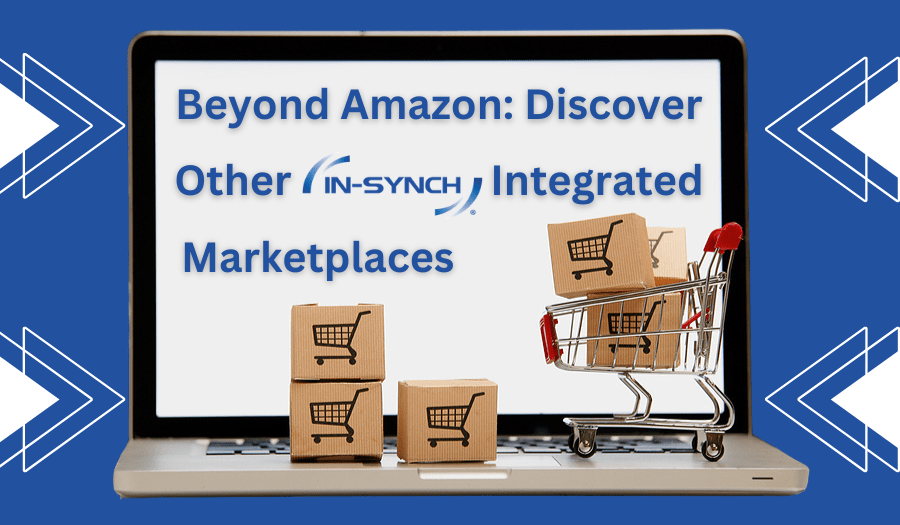By Ruth Richter • December 05, 2017
How to Succeed in E-Commerce Without a CIO
Small businesses don’t usually have the luxury of a dedicated CIO. In these organizations, people often wear many hats even when they don’t have the background and training for the roles. In our experience, in the majority of cases, the small business President also makes the strategic technology decisions.
Technology has become a business enabler and having a strategic technology plan is needed for growth. Technology can improve business processes, lower costs and improve the customer experience. As technology innovation accelerates, small businesses need to move quickly to embrace new software and devices and prepare for the next change. Lagging behind the technology cycle may mean losing out on business altogether.
At the same time, small businesses don’t usually have the deep pockets needed to survive an unsuccessful technology project. Failure isn’t an option.
If technology is so critical to business success, can a small company succeed without a dedicated CIO? Yes, and as we’ve seen in our business, they can thrive.
The Role of the CIO in a Small Business
Even if a small business is not able to staff a full-time CIO, the tasks of CIO must be completed. The CIO position has moved to being a strategic one—ensuring that company technology supports business plans and growth. This responsibility is closely tied to business strategy which is why we often see it being performed by the owner or President of the company. In fact, support from the top of the organization is often why these companies’ projects succeed. Take Palmetto Parts Co. for an example. “I end up wearing many hats to run a smooth operation, says Bill Meany, an owner whose title is V.P. of Sales. “In the past five years, I’ve personally been working to implement technologies that make it much easier to sell our products and likewise, much easier for customers to purchase from us.”
Here are common tasks of the CIO from most strategic to more operational:
- Plan for future technology
- Enable business growth
- Data and system security
- Manage projects
- Manage vendors
- Manage technology
Creating a strategic technology plan provides a framework and budget for technology operations. The small company CIO must have knowledge of both business and technology trends. However, there are many options for implementing the plan using outside resources.
Small Business Technology Options
Whether small or large, businesses need to provide more value with fewer resources. Often, small businesses may believe that the costs of technology are too high. However, the latest advancements in technology are what makes it possible for small businesses to compete effectively even in competitive markets. Tyler Young, Director of Ecommerce & Digital Strategy at Allied Materials recently selected an integrated e-commerce aggregator solution that will enable them to sell on all the major marketplaces. “The investment is a hurdle for any small business, but investments like these are a must to be effective in the today’s marketplaces. Rolling out these integrations early, before manual processes break down, is essential to building a successful marketplace business that can scale.”
Every small business can take the following steps to affordably implement technology to enable strategic growth.
- Use pre-existing solutions. Many accounting software solutions are flexible enough to meet small business requirements without custom programming. Today, it is possible to quickly create a website with on-line tools and set up e-commerce with a fully functional shopping cart. Integration tools exist to move data from e-commerce systems to accounting software and back again.
- Utilize the cloud. Using the cloud for software and hosting helps to remove costs from the organization and keeps the technology management in the hands of the experts. This not only keeps start-up costs low, but also keeps ongoing costs steady. The small company only pays for what is used and can quickly add resources to meet growth requirements. These benefits are why the majority of small businesses use at least one cloud solution.
- Outsource. While the strategic technology function may be best performed in-house, there are many options for outsourcing technology management, data security, and more. Many custom software projects can be affordable even for small companies.
- Integrate. Integration is one of the key things that a small business should do to enable rapid growth. Relying on manual file uploads, duplicate data entry, or multiple databases will keep costs high and limit business growth. Integrated applications provide a unified, consistent view of the business, lower the cost of operations and create a better customer experience.
Embrace Technology for Growth
Embracing technology can provide a distinct competitive advantage. In many cases, technology is enabling small businesses to expand into new markets and grow rapidly. Performing CIO functions in a small business is an important role to support this growth.
This article first appeared in Bellwether Magazine.




